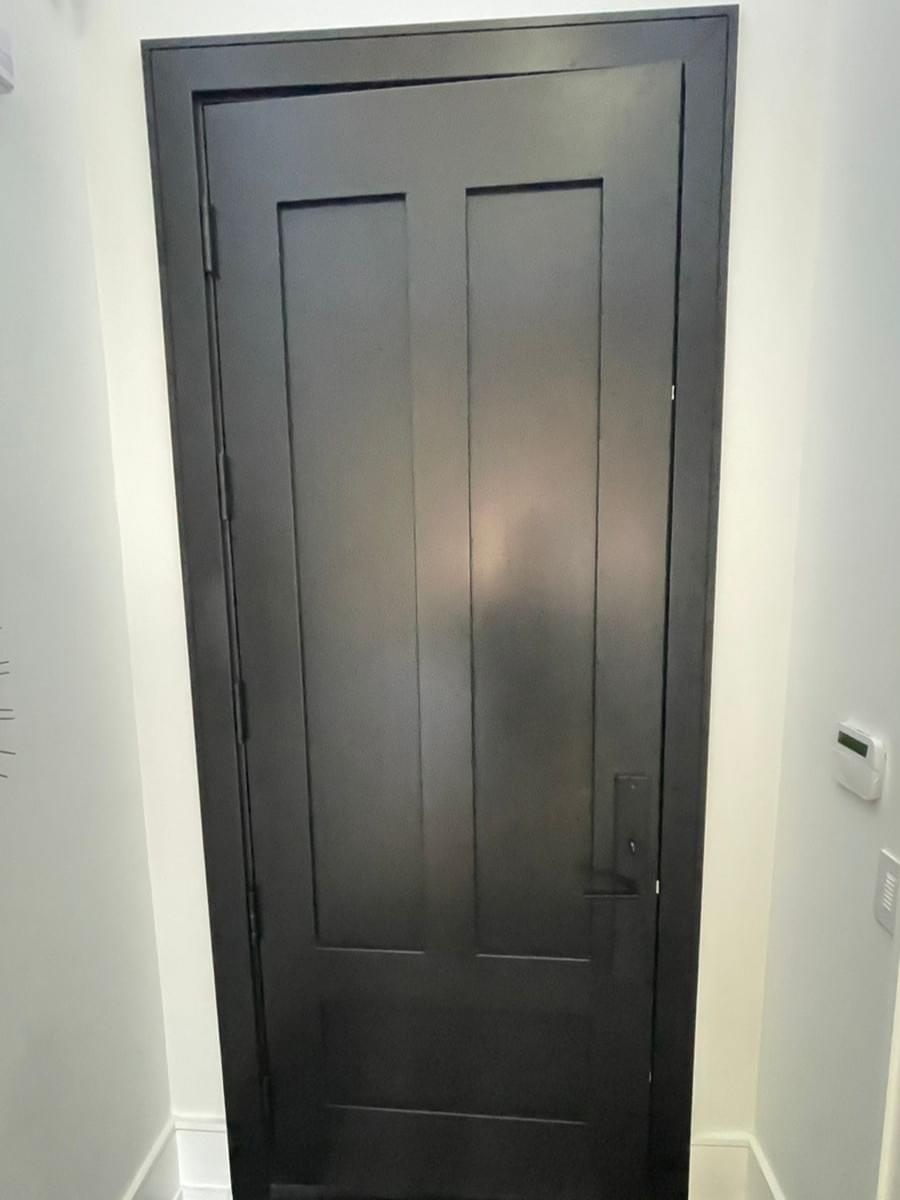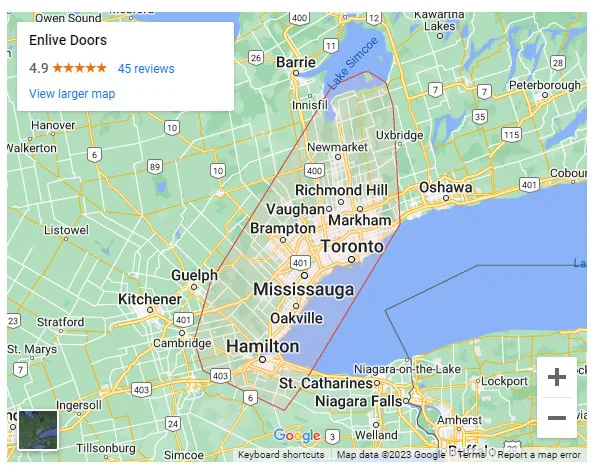Why Your Door Won’t Latch: Common Causes in Toronto Homes
Before diving into repairs, let’s pinpoint why your door isn’t latching. Here are the most common culprits, especially relevant in the Toronto and GTA climate:
- Loose Hinges: Over time, hinge screws can loosen, causing the door to sag and misalign.
- Misaligned Strike Plate: The metal piece on the frame where the latch catches might be off, preventing a secure close.
- Warped Door or Frame: Toronto’s humid summers and freezing winters can cause wood to swell or metal to contract, throwing off alignment.
- Worn-Out Latch: A damaged or old latch might not engage properly.
To diagnose the issue:
- Test the Hinges: Lift the door by the handle. If it wiggles, the hinges need tightening.
- Check Alignment: Slowly close the door and watch if the latch lines up with the strike plate. A gap over 1/8 inch means adjustment is needed.
- Look for Warpage: Use a level to spot bends or gaps in the door or frame—common in Canada’s variable weather.
- Inspect the Latch: Check for wear or damage on the latch itself.
Tools and Materials: Where to Find Them in Toronto and the GTA
You don’t need a full workshop to fix your door. Here’s what you might need, all available at local stores like Home Depot or Canadian Tire locations across the GTA:
- Screwdriver (manual or electric)
- Drill (optional, for tougher fixes)
- Chisel (for strike plate adjustments)
- Wood filler (if screw holes are stripped)
- Replacement latch (if yours is broken)
- Sandpaper (for smoothing warped edges)
- Lubricant (e.g., WD-40, for sticky latches)
Tip: If you’re missing a tool, stores like Rona or Lowe’s in the GTA can help you grab what you need.
Step-by-Step Guide to Fixing Your Door Latch
Let’s get to work. Follow these steps, starting with the easiest fixes:
Step 1: Tighten the Hinge Screws
- Open the door and tighten all hinge screws on both the door and frame using a screwdriver.
- If screws won’t hold: Remove them, fill the holes with wood filler, let it dry, then reinsert the screws.
- Pro Tip: Swap short screws for longer ones to anchor into the frame studs for extra stability—a good move for Toronto’s older homes.
Step 2: Adjust the Strike Plate
- Mark where the latch hits the strike plate with a pencil as you close the door.
- Minor Misalignment: File the strike plate hole slightly larger if the gap is small.
- Bigger Fix: Unscrew the strike plate, chisel a bit of wood from the frame to reposition it, then reattach.
- Caution: Chisel gradually to avoid overcutting.
Step 3: Address Warpage from Toronto’s Climate
- Toronto’s weather—humid summers and icy winters—can warp doors. Check with a level for uneven spots.
- Minor Warping: Sand down high spots on the door or frame.
- Sagging Door: Add shims behind hinges to lift and realign it.
- When It’s Serious: Severe warping might mean replacing the door—a job for pros if DIY isn’t enough.
Step 4: Replace the Latch
- Unscrew the latch from the door edge, remove it, and install a matching replacement.
- Tip: Take the old latch to a GTA hardware store like Canadian Tire to ensure a perfect fit.
Safety Notes:
- Secure the door to avoid it swinging.
- Don’t overtighten screws to prevent stripping.
- Wear safety glasses if using a drill.
Preventive Maintenance for Door Hardware: Keep Your Door Latch Trouble-Free
Regular maintenance of your door hardware can prevent latch issues and save you from costly repairs down the line. In Toronto and the GTA, where summer humidity and harsh winter freezes can wear down hinges, latches, and screws, a little upkeep goes a long way. By making these simple tasks part of your routine, you’ll keep your door working smoothly and avoid bigger headaches.
Here’s how to maintain your door hardware like a pro:
- Inspect Hinges, Screws, and Latches: Every six months, take a close look at your door’s hardware. Check for loose screws, wobbly hinges, or worn-out latches. Catching these early can stop small problems from growing.
- Tighten Screws Regularly: Grab a screwdriver and tighten any loose screws on the hinges and strike plate. This keeps the door aligned with the frame, preventing sagging that messes with the latch. Pro Tip: If screws won’t stay tight, swap them for slightly longer ones for a stronger grip.
- Lubricate Moving Parts: Apply a light lubricant like WD-40 to the hinges and latch mechanism to keep them moving freely. For locks, try graphite powder—it’s less likely to attract dust than oil. Do this in spring and fall to prep for seasonal changes.
- Check for Rust or Corrosion: Toronto’s humid summers and salty winter air can cause rust on metal hardware. If you spot it, scrub it off with a wire brush and use a rust-inhibiting spray to protect it moving forward.
- Clean the Hardware: Wipe down hinges, latches, and strike plates with a damp cloth to remove dirt and debris. Buildup can wear down parts over time, so keeping them clean helps them last longer.
When to Do It: Plan a quick check twice a year—spring and fall are perfect times to get your door ready for Toronto’s weather shifts.
Bonus Tip: If your door starts sticking or rubbing against the frame, don’t ignore it. A small tweak now can prevent bigger alignment issues later.
With just a few minutes of care, you’ll keep your door hardware in great shape and reduce the chances of latch troubles.
Troubleshooting: When the Fix Doesn’t Stick
Still having trouble? Try these:
- Lubricate: Spray WD-40 into the latch if it’s sticky and test it a few times.
- Clear Blockages: Remove paint, debris, or excess weatherstripping around the latch area.
- Frame Shift: If your Toronto home has settled, frame adjustments might be needed—tricky without experience.
- Weatherstripping: Too much can push the door out of alignment; trim it back.
If these don’t work, it might be time for professional help. For Toronto and GTA residents, Enlive Doors is a top choice. They specialize in door repairs and installations, offering free estimates and expert fixes for everything from misaligned latches to warped frames. Their technicians can tackle residential and commercial jobs with efficiency and reliability. Call them at (647) 371-5756 or check their website for details.
When to Replace a Door Instead of Repairing It: Signs It’s Time for an Upgrade
While many latch problems can be fixed with a bit of DIY know-how, some doors reach a point where repairs just won’t cut it. Knowing when to replace your door instead of patching it up again can save you time and frustration—especially in Toronto, where a faulty door can mean chilly drafts and higher energy bills. Here’s how to tell when it’s time to say goodbye to your old door.
Look out for these signs that replacement might be the best option:
- Severe Warping: If your door is warped more than 1/4 inch and adjustments don’t fix it, it won’t latch properly and will let in drafts—a big problem during Toronto winters.
- Extensive Rot or Structural Damage: Feel for soft spots or look for crumbling wood and large cracks. If the door’s core is failing, repairs won’t restore its strength or keep your home secure.
- Persistent Alignment Issues: Have you tweaked the hinges and strike plate over and over, but the latch still won’t catch? The door or frame might be too far gone to fix.
- Outdated or Inefficient Design: Older doors often lack good insulation, driving up your heating costs. If your door feels drafty or flimsy, a modern, energy-efficient upgrade could pay off.
Why Replace Instead of Repair?
- Energy Savings: A new, insulated door keeps the cold out, cutting down on winter heating bills—a win for any Toronto homeowner.
- Better Security: Modern doors come with stronger materials and locks, boosting your home’s safety.
- Curb Appeal: A fresh door can give your home a facelift, which is a bonus if you’re thinking of selling in the GTA.
Warning: Don’t waste time fixing a door that’s too damaged to save. If the structure’s shot, even the best repairs won’t make it reliable.
Not Sure? Ask an Expert: If you’re torn between repairing and replacing, a local pro like Enlive Doors in Toronto can give you a free assessment to help you decide.
Replacing a door is a bigger job, but it’s often worth it for the comfort, security, and efficiency a new one brings. If your door’s showing these red flags, it might be time to start shopping.
Conclusion: Keep Your Toronto Home Secure
Fixing a door that won’t latch is a straightforward DIY project with the right steps—tighten hinges, adjust the strike plate, handle warpage, and check the latch. For Toronto and GTA homeowners, addressing these issues quickly can prevent drafts and boost security, especially in Canada’s harsh winters. Take your time, and you’ll have it sorted. Need a hand? If you’re in Toronto or the GTA and prefer a professional touch, Enlive Doors offers same-day service and expertise in door repairs. Contact them at (647) 371-5756 for a free estimate and let their skilled team get your door back in shape. Stay warm and secure!



